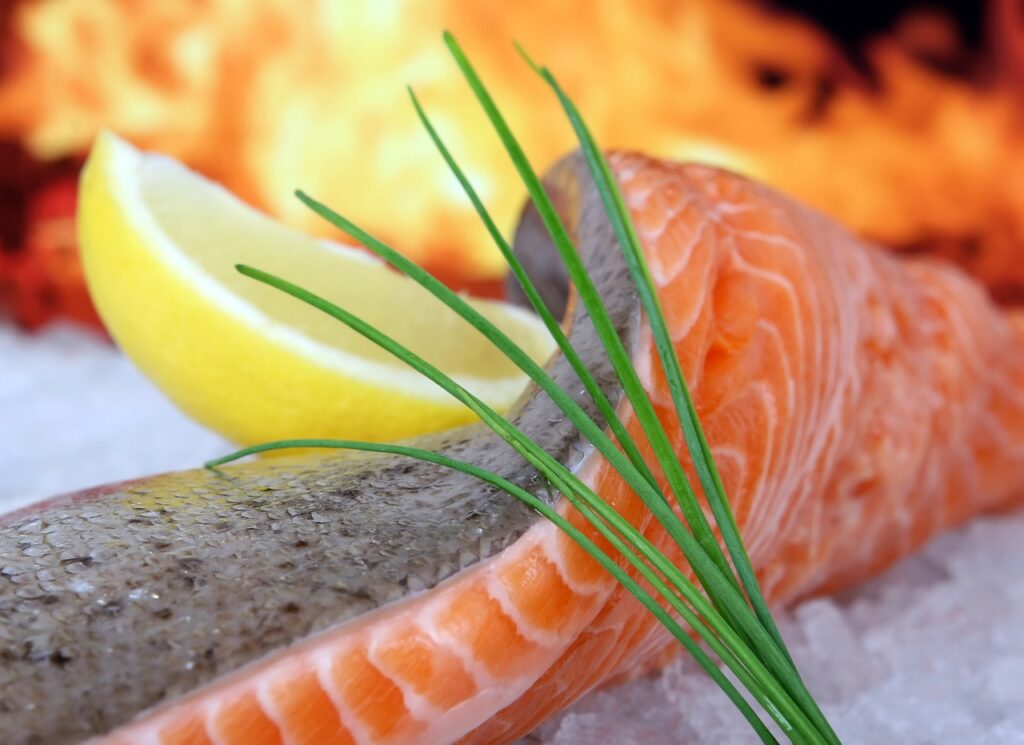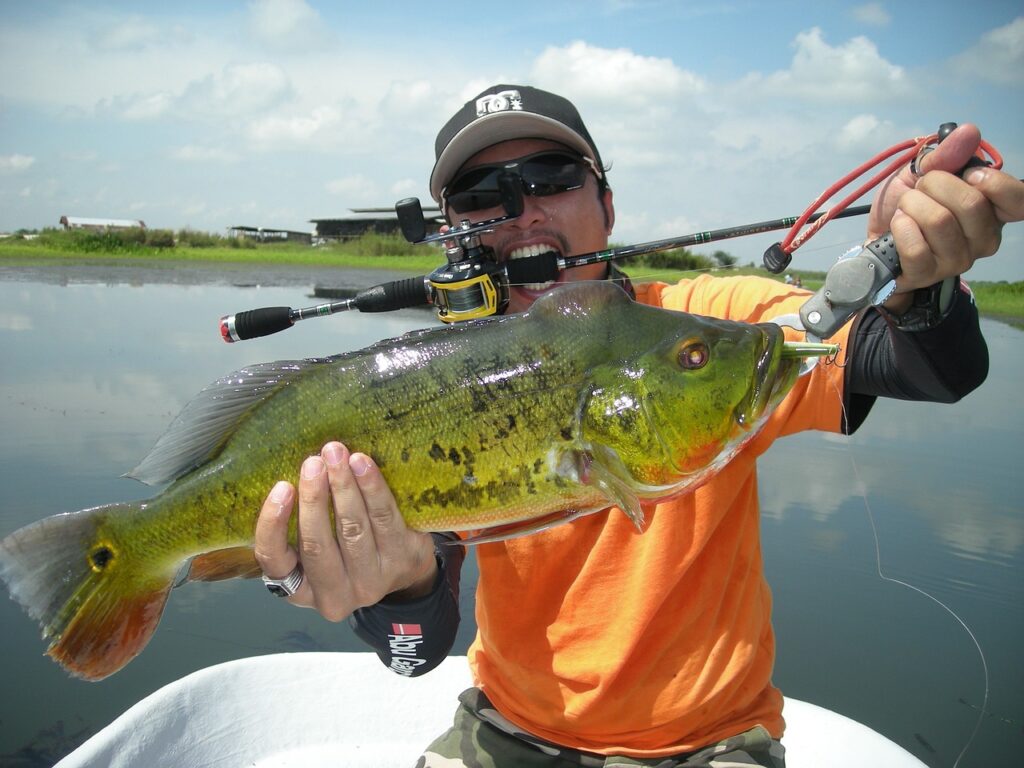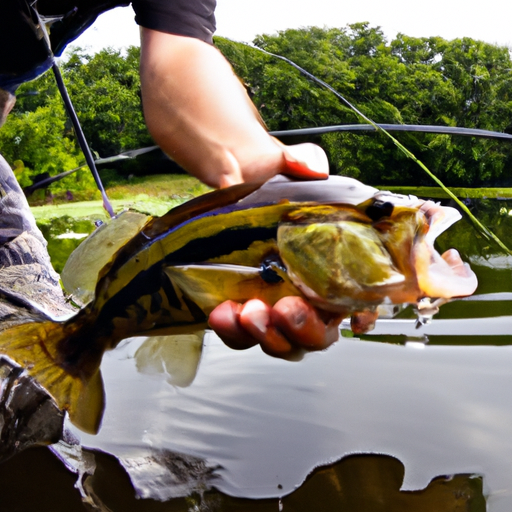Imagine yourself out on a serene lake, the sun shining above and a gentle breeze blowing. In one hand, you hold a fishing rod, and in the other, a guidebook titled “Can You Go Bass Fishing: Tips and Techniques for Bass Anglers.” This comprehensive guide is your ticket to becoming a skilled bass angler, providing you with invaluable tips and techniques to reel in those big catches. Whether you’re a beginner or a seasoned angler, this book will equip you with the knowledge and strategies to make your bass fishing adventures a resounding success.

Gear and Equipment
When it comes to bass fishing, having the right gear and equipment is essential for a successful and enjoyable experience on the water. Let’s take a closer look at some key items you’ll need:
Rod and Reel
Choosing the right rod and reel combo is crucial for effectively targeting bass. When it comes to bass fishing, a medium to medium-heavy rod with a fast action is usually recommended. This will provide you with the sensitivity and strength needed to detect subtle bites and handle the power of a hooked bass. As for the reel, a baitcasting reel is a popular choice due to its accuracy and control, but many anglers also find success with spinning reels.
Fishing Line
Selecting the appropriate fishing line is another important aspect of gearing up for bass fishing. Monofilament, fluorocarbon, and braided lines are all viable options, each with its own advantages. Monofilament line is versatile and cost-effective, fluorocarbon line is nearly invisible underwater, and braided line offers excellent strength and sensitivity. The line weight will depend on the size of the bass you’re targeting and the type of cover you’ll be fishing around.
Lures and Baits
Choosing the right lures and baits can make a significant difference in your bass fishing success. Some popular options for bass fishing include soft plastics such as worms or creature baits, crankbaits, spinnerbaits, and topwater lures. It’s important to have a variety of colors, sizes, and styles to experiment with, as bass can be finicky and their preferences can change depending on various factors such as weather and water conditions.
Tackle and Accessories
In addition to your rod, reel, fishing line, and lures, there are several other tackle and accessories that can enhance your bass fishing experience. Items such as hooks, weights, and swivels are necessary for rigging your lures properly. It’s also a good idea to have a tackle box or bag to keep your gear organized and easily accessible. Other accessories like polarized sunglasses, a fishing hat, and sunscreen can help protect you from the elements and improve your visibility on the water.
Location Selection
Choosing the right location to go bass fishing is key to increasing your chances of landing a prized catch. Here are some factors to consider when selecting your fishing spot:
Freshwater vs. Saltwater
Deciding whether to fish in freshwater or saltwater will depend on your personal preferences and the availability of fishing spots in your area. Many bass anglers prefer freshwater fishing as it provides a variety of opportunities to target different bass species, including largemouth and smallmouth bass. Saltwater bass fishing, on the other hand, typically revolves around targeting striped bass in coastal areas.
Lakes and Ponds
Lakes and ponds are popular choices for bass fishing due to their abundance of prey and cover. Look for structures such as submerged rocks, fallen trees, and vegetation where bass are more likely to hide and feed. Pay attention to the water temperature and depth, as bass tend to be more active in warmer water and may move to deeper areas during the hottest part of the day.
Rivers and Streams
Rivers and streams can provide thrilling bass fishing opportunities, but they can also present unique challenges. Bass in these environments are often more reactive to current and water flow, so it’s important to consider how these factors can affect your lure presentation and retrieve. Focus on targeting areas with slower currents, such as eddies and behind rock formations, where bass often congregate.
Habitat Preferences
Understanding the habitat preferences of bass can greatly increase your chances of finding and catching them. Look for areas with abundant vegetation, such as lily pads, submerged grass, and weed beds, as these provide cover and attract prey. Bass also tend to be drawn to structures like docks, rock piles, and submerged brush, as these offer hiding spots and ambush points. Pay attention to the clarity of the water as well, as bass may be more cautious in clear water and less wary in murky or stained water.

Understanding Bass Behavior
To become a successful bass angler, it’s crucial to have a good understanding of bass behavior and their habits. Here are some key factors to consider:
Feeding Patterns
Bass are opportunistic predators and will feed on a wide variety of prey, including fish, insects, and crustaceans. Understanding their main food sources in the body of water you’re fishing will help you choose the most effective lures and baits. Bass tend to be more active during low-light periods, such as early morning and late evening, as well as during seasonal feeding windows, such as spring and fall.
Seasonal Movements
Bass exhibit seasonal movements that can affect their behavior and location. In the spring, for example, bass will often move shallow to spawn and can be found near shallow cover and structure. During the summer, they may move to deeper waters to seek cooler temperatures and follow their prey. In the fall, bass tend to be more active and feed aggressively as they prepare for the winter. Understanding these movements and adjusting your fishing strategies accordingly can greatly increase your success.
Water Temperature and Depth
Water temperature and depth are critical factors that influence bass behavior. As the water temperature rises, bass become more active and tend to move into shallower areas. Conversely, as the water cools, bass will seek deeper and more stable temperatures. Understanding the preferred temperature range of bass in the body of water you’re fishing can help you locate them more efficiently and target your lures effectively.
Cover and Structure
Bass are notorious for seeking cover and relating to structure. They use these features for shelter, ambushing prey, and as navigational references. When fishing for bass, it’s important to target areas with cover and structure, such as submerged vegetation, fallen trees, rock formations, and docks. Casting your lures close to these areas and working them through the cover can trigger aggressive strikes from bass.
Casting and Retrieval Techniques
Now that you have a good understanding of gear, location selection, and bass behavior, let’s explore some casting and retrieval techniques that can help you entice and catch bass:
Casting Accuracy
Developing your casting accuracy is crucial for consistently putting your lure in the strike zone and enticing bass to bite. Practicing your casting technique and learning how to cast accurately to specific targets, such as under docks, near submerged vegetation, or along the edges of structure, can significantly increase your catch rate. Remember to use smooth and controlled casting motions to minimize noise and disturbances that could spook bass.
Flipping and Pitching
Flipping and pitching are specialized casting techniques that allow you to present your lure quietly and accurately in tight quarters, such as under overhanging trees or into thick vegetation. Flipping involves swinging the lure out with your non-dominant hand and releasing it with a controlled flip of your wrist. Pitching, on the other hand, involves a more linear motion where you propel the lure forward using your dominant hand and release it near your target. These techniques can be highly effective in enticing bass in areas with heavy cover.
Topwater Techniques
Fishing with topwater lures can provide some of the most exciting moments in bass fishing, as you witness explosive strikes right on the surface. There are various topwater lures available, including poppers, buzzbaits, and walking baits. Experiment with different retrieves, such as a slow and steady retrieve, a stop-and-go retrieve, or a fast and erratic retrieve, to determine what triggers the most aggressive strikes from bass.
Jerkbait Techniques
Jerkbaits are a versatile lure option that imitates injured baitfish and can entice both active and sluggish bass. The key to effectively fishing jerkbaits is mastering the erratic “jerk” and “pause” retrieve. By twitching your rod to make the lure dart from side to side and then pausing it momentarily, you can simulate the erratic movements of injured prey and trigger reaction strikes from bass. Vary the length of the pause and the intensity of the jerks to find the most effective cadence for the current fishing conditions.

Fishing Strategies
Now that you have a solid foundation of bass fishing techniques, let’s explore some fishing strategies that can help you maximize your success on the water:
Early Morning and Late Evening Fishing
Early morning and late evening are often the most productive times for bass fishing. During these low-light periods, bass are more active and tend to be more aggressive in their feeding. Targeting areas with cover and structure, as well as areas with baitfish activity, can increase your chances of landing a nice bass. Pay attention to the water surface for any signs of feeding activity, such as splashes or small ripples.
Midday Fishing
While early morning and late evening fishing can be highly productive, don’t discount the midday hours. During hot summer days, for example, bass may seek deeper and cooler waters, but they can still be caught by adjusting your techniques. Slow down your retrieve and focus on fishing deeper zones or areas with shade, such as under docks or overhanging trees. Jigging or dragging soft plastic baits along the bottom can be particularly effective during these hours.
Adaptation to Weather Conditions
Weather conditions can greatly influence bass behavior and their willingness to bite. On cloudy or overcast days, bass may be more inclined to roam and feed in shallower areas. On bright and sunny days, they may seek cover and shade, making presentations near structures or in deeper waters more effective. Pay attention to factors such as wind direction and speed, barometric pressure, and water temperature to adjust your fishing strategies accordingly.
Bed Fishing Techniques
During the spring, bass will often move shallow to spawn and guard their nests or beds. Bed fishing can be a challenging yet rewarding experience, as you can watch the bass interact with your lure and witness the strike firsthand. When bed fishing, it’s important to approach the area quietly and use a finesse approach with lighter line and smaller lures. Carefully present your bait near the bed and make subtle movements to entice the bass to strike.
Techniques for Catching Largemouth Bass
Largemouth bass are one of the most popular targets for bass anglers due to their size and aggressive nature. Here are four effective techniques for catching largemouth bass:
Spinnerbait Fishing
Spinnerbaits are versatile lures that can be fished at various depths and retrieve speeds. The combination of flashy blades and a skirt imitates a baitfish, making it an irresistible target for hungry largemouth bass. Experiment with different sizes and colors of spinnerbaits to match the prevailing conditions. Retrieve the lure at different speeds and experiment with pauses and jerks to trigger strikes.
Crankbait Fishing
Crankbaits are effective lures for covering large areas of water and targeting bass at different depths. Use lipless crankbaits for fishing shallow areas or when bass are more active, while deep-diving crankbaits are ideal for targeting bass in deeper waters or during colder months. Vary your retrieval speed and consider bumping the lure off cover or structure to trigger reaction strikes.
Texas Rig Fishing
The Texas rig is a popular and versatile setup for fishing soft plastic baits, such as worms or creature baits, in areas with heavy cover. The setup consists of a bullet-shaped weight threaded onto the line, followed by a hook and the plastic bait. The weedless nature of the Texas rig allows you to fish through vegetation and structure without getting snagged. Experiment with different colors and sizes of soft plastics to determine what the bass are most attracted to.
Jig Fishing
Jigs are another effective lure option for targeting largemouth bass, especially in areas with heavy cover or during colder months. Jigs consist of a weighted head, often made of lead or tungsten, and a skirt or trailer that imitates a crawfish or baitfish. Fishing jigs in and around cover, such as submerged brush piles or fallen trees, can entice aggressive strikes from big bass. Pay attention to the type and color of the skirt or trailer and adjust your retrieval speed to match the conditions.

Techniques for Catching Smallmouth Bass
Smallmouth bass are known for their fighting ability and aggressive strikes, making them a favorite target among bass anglers. Here are four techniques for catching smallmouth bass:
Drop Shot Fishing
Drop shot fishing is a finesse technique that can yield excellent results when targeting smallmouth bass, especially in clear and deep waters. It involves attaching a hook and weight to the mainline, with the hook positioned a few inches above the weight. Add a small plastic bait, such as a finesse worm or minnow imitator, to the hook. This setup keeps the bait suspended off the bottom and allows for a natural-looking presentation. Use light gear and a light line to maximize sensitivity and detect subtle bites.
Tube Bait Fishing
Tube baits are highly effective for imitating crawfish, one of the preferred food sources of smallmouth bass. The hollow body and tentacles of a tube bait create an enticing action in the water. Rig the tube bait on an offset hook and use a lighter weight to allow for a slower fall and a more natural presentation. Experiment with different colors and sizes to match the local forage and water conditions.
Ned Rig Fishing
The Ned rig is a finesse technique that has gained popularity among bass anglers, especially for smallmouth bass. It consists of a small mushroom-shaped jighead paired with a soft plastic bait, such as a stick bait or minnow imitator. The technique involves a slow and subtle retrieve, with occasional pauses and slight twitches to imitate a vulnerable prey item. The simplicity and effectiveness of the Ned rig make it a go-to technique for targeting smallmouth bass in a variety of conditions.
Carolina Rig Fishing
Carolina rig fishing is a versatile technique that can be used to target smallmouth bass in a variety of habitats, including rocky areas, clear-water lakes, and river systems. The Carolina rig consists of a bullet-shaped weight, a swivel, a leader line, and a hook. The weight is placed above the swivel, while the hook is attached to the leader line, which can vary in length depending on the depth you’re fishing. Combine the Carolina rig with a soft plastic bait, such as a creature bait or worm, and experiment with different retrieves to entice strikes from smallmouth bass.
Catch and Release Best Practices
As responsible anglers, it’s important to practice catch and release to ensure the long-term sustainability and health of bass populations. Here are some best practices for catch and release:
Proper Handling Techniques
When handling a caught bass, it’s crucial to minimize stress and the risk of injury. Wet your hands before touching the fish to reduce the removal of its protective slime. Support the bass horizontally to avoid injuring its jaw or internal organs. Avoid squeezing the fish tightly and refrain from touching its gills. If you want to take a photo, make it quick and keep the bass close to the water before safely releasing it.
Hook Removal
Removing the hook as quickly and efficiently as possible can minimize injury to the bass. Use needle-nose pliers or a hook removal tool to safely remove the hook while causing minimal harm to the fish. If the hook is deeply embedded, cut the line as close to the hook as possible instead of repeatedly trying to remove it, as this can be less damaging to the fish.
Reviving Fish
After landing a bass, it’s important to give it time to recover before releasing it back into the water. Hold the bass gently in the water, facing it into the current or gently cradle it in your hands, allowing water to flow through its gills. Move the fish back and forth in the water to help oxygenate its gills. Once the bass shows signs of strength and begins to swim actively, release it back into the water.
Reporting Tagged Fish
If you come across a tagged bass during your fishing adventures, be sure to report it to the appropriate authorities. Tagged fish provide valuable information about population dynamics and migration patterns. Take note of the tag number and any other important details before releasing the fish. Contact your local fish and wildlife agency or the organization responsible for the tagging program to report your catch.

Safety Tips
While bass fishing can be a fun and rewarding activity, it’s important to prioritize safety on the water. Here are some safety tips to keep in mind:
Sun Protection
Spending extended periods on the water exposes you to the sun’s harmful rays. To protect yourself, wear sunscreen with a high SPF, a wide-brimmed hat, and polarized sunglasses to reduce glare. Consider wearing lightweight and breathable clothing that covers your skin, especially during peak sunlight hours.
Life Jacket Usage
Wearing a properly fitting and Coast Guard-approved life jacket is essential for personal safety, especially if you’re fishing from a boat or fishing in rough waters. Accidents can happen, and wearing a life jacket can greatly increase your chances of survival in case of an emergency.
Boat Safety Checks
If you’ll be fishing from a boat, it’s important to ensure that your vessel is in good working condition before heading out onto the water. Check the boat’s engine, electrical systems, and safety equipment, such as navigation lights and fire extinguishers. Make sure all passengers are familiar with emergency procedures and the location of safety equipment on board.
Weather Monitoring
Keep a close eye on weather conditions before and during your fishing trip. Thunderstorms, strong winds, or rapidly changing weather patterns can pose significant risks on the water. Carry a portable weather radio or use a reliable weather app to stay informed about any potential storms or hazardous conditions.
Conclusion
Bass fishing is an exciting and rewarding activity that requires a combination of knowledge, skill, and patience. By understanding the gear and equipment, location selection, bass behavior, casting and retrieval techniques, fishing strategies, and catch and release best practices discussed in this article, you’ll be well-equipped to embark on an enjoyable bass fishing adventure. Remember to always prioritize safety on the water and respect the natural environment. Happy bass fishing!





